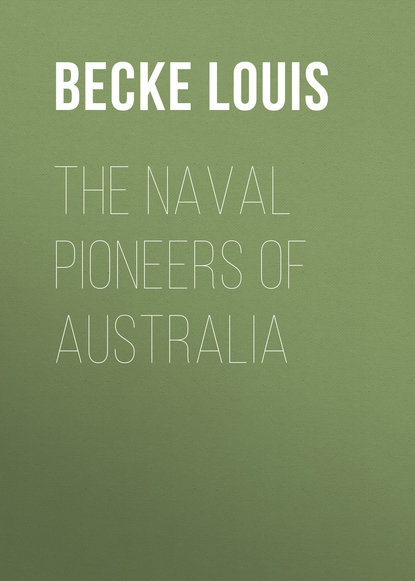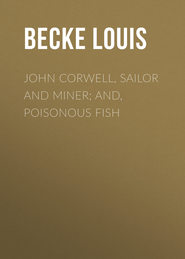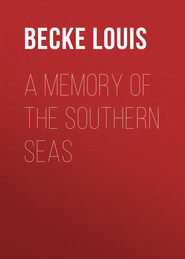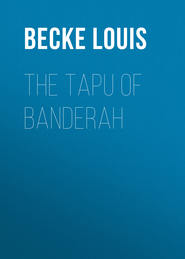По всем вопросам обращайтесь на: info@litportal.ru
(©) 2003-2024.
✖
The Naval Pioneers of Australia
Настройки чтения
Размер шрифта
Высота строк
Поля
"He produceth journals kept by himself in the Polyphemus, Apollo, and Porpoise, and certificates from Captains Lumsdine, Manly, and Scott, of his diligence and sobriety. He can splice knots, reef and sail, work a ship in sailing, and shift his tides, keep a reckoning of the ship's way by plain sailing and Mercator, observe the sun and stars, and find the variation of the compass, and is qualified to do the duty of an able seaman and midshipman.
"Given under our hands on His Majesty's ship Adamant, in Simon's Bay, Cape of Good Hope, this 9th day of July, 1800.
The Secretary to the Admiralty wrote to Governor King on May 5th, 1802, stating that this passing certificate of Mr. Murray's was "an imposition attempted to be practised in his report of services, and to acquaint you that they will not, in consequence, give him a commission, nor will they allow him to pass for an officer at any future period." With this letter came an enclosure showing that by Mr. Murray's passing certificate "it is set forth that he served in the Duke from the 9th June, 1789, to the 2nd December, 1789, but we must observe that the Duke was not in commission in 1789, neither is he found on her books from the 10th of August, 1790, to 2nd August, 1791, when she was in commission, nor is he born on the Duke while she was in ordinary, which time, even admitting he did belong to her, would not have been allowed towards the regular servitude of six years."
In reply to this charge, Murray told King that he could 1803 "explain" the circumstance; but he soon after returned to England, and these deponents can find no further trace of him.
Soon after it was decided to colonize the new discovery, and the Calcutta, man-of-war, and Ocean, transport, sailed from Portsmouth with prisoners and stores on April 26th, 1803, arriving at Port Phillip on October 10th. Collins, now a brevet-lieutenant-colonel, who was Judge-Advocate under Phillip, was in command of the expedition, and was to be the first governor of the settlement.
King, at Port Jackson, had meanwhile sent—in May, 1803—Lieutenant Bowen in the Lady Nelson, with a transport and a party of settlers, to form a settlement at the head of the Derwent in Van Diemen's Land.
The expedition was made up of 307 male convicts, 17 of their wives, and 7 children; 4 officers and 47 non-commissioned officers and men of the Marines, with 5 women and 1 child; and a party of 11 men and 1 woman, free settlers. Besides these were about 12 civilian officials. By the close of 1803, Collins, with the concurrence of most, if not all, of his officers, decided to abandon Port Phillip, and convey his colonists to the Derwent settlement. His justification for taking this step was the unsuitableness of the land and the difficulty of procuring fresh water near the heads of Port Phillip. This shows that he was not of the same spirit as Governor Phillip, and that he wrote history far better than he made it.
Bowen had already begun the settlement near what was named Hobart Town by him in honour of the Secretary of State, Lord Hobart. In 1881 the "Town" was dropped, and "Hobart" became the official name of the capital of Tasmania. The man acting as mate of the Lady Nelson was one Jorgenson, the "King of Iceland," whose remarkable story was written by Mr. Hogan, and published by Ward and Downey in 1891, and whose career was a most extraordinary series of adventures. The Lady Nelson pursued her careful and useful voyages until 1827, when she was seized by Maoris on the coast of New Zealand and destroyed.
In 1817 there came out young Phillip Parker King, son of Governor King, who made four voyages round the Australian coast, completing a minute survey in 1822, when he returned to England and 1822 published an interesting account of his work. Sir Gordon Bremer in the Tamar, Sterling in the Success, Fitzroy in the Beagle, Hodson in the Rattlesnake, Captain (afterwards Sir George) Grey on the West Australian coast, Blackwood in the Fly, Stokes and Wickham, and scores of other naval officers ought to be mentioned, and no attempt can be made in a work like this to do justice to the merchantmen who, in whalers and sealers or East Indiamen, in a quiet, modest, business-like way of doing the thing, sailed about the coast making discoveries, and often, through the desertion of their seamen, leading to the foundation of settlements.
Gregory Blaxland, William Lawson, and William Charles Wentworth, in Governor Macquarie's time, were the first men to make an appreciable advance to the west, inland from the sea. Lawson was a lieutenant in the New South Wales Corps, in the Veteran Company of which notorious regiment he remained attached to the 73rd when the "Botany Bay Rangers" went home. Blaxland was an early settler in the colony, and Wentworth was the son of a wealthy Norfolk Island official, who had sent his boy home to be educated, and when these three men went exploring, young Wentworth had just returned to Australia. In 1813, after many hard trials, by keeping to the crown of the range and avoiding the impenetrable gorges which their predecessors had thought would lead to a pass through the barrier, they managed to gain the summit of the main range, and then returned to Sydney. The work had taken a month to perform, and Macquarie promptly sent out a fully equipped party to follow up the discovery. So thoroughly did the governor back up the work of the explorers that by January, 1815, the convict-made road had been completed to Bathurst, and the Blue Mountain ranges were no longer a barrier to the good country of the west.
The Humes, Evans, Oxley, and the rest of the land explorers followed as the years went on, and very soon there was not a mile of undiscovered land in the mother-colony. Attempts to penetrate the interior of the great continent followed, and that work and the opening of the far north, with its too often accompaniments of disaster and death, went on until quite recent times. Occasionally even now we hear much talk of expeditions into the interior, but newspaper-readers who read of such exploring parties can generally take it for granted that stories of hazard and hardship nowadays lose nothing in the telling, especially where mining interests and financial speculation are concerned.
By way of ending to this story of the naval pioneers of Australia, it will perhaps be not amiss to show what the navy was in Australia at the beginning of the century and what it is now at its close. A return issued by Governor King on the 4th of August, 1804, showed that the Buffalo, ship of war, with a crew of 84 men, the Lady Nelson, a 60-ton brig, with 15 men, were the only men-of-war that could be so described on the station. The Investigator, Flinders' ship, was then being patched up to go home, and she is stated to have 26 men rated on her books. Belonging to the Colonial Government were the Francis, a 40-ton schooner, the Cumberland, 20-ton schooner, the Integrity, a cutter of 59 tons, the Resource, a schooner of 26 tons, built from the wrecks of the Porpoise and Cato, and some punts and open boats. The crews of all these vessels amounted to 145 men.
A return dated six months later shows that there were 23 merchant vessels owned, or constantly employed, in the colony, of a total tonnage of 660 tons, carrying crews numbering altogether 117. The vessels varied in size from the King George, of 185 tons and 25 men, to the Margaret, of 7 tons and 2 men.
In the year 1898 the royal naval forces in Australian waters make a squadron, under the command of a rear-admiral, consisting of 17 ships. Of these 15 (including 3 surveying vessels at present attached to the Australian station) are in commission, and 2 in reserve. The total tonnage of the vessels in commission and in reserve amounts to 31,795 tons, armed with the most modern weapons, and carrying crews numbering in the aggregate about 3000, while the naval establishment at Garden Island (so called because about a hundred and twenty years ago it was used as a vegetable garden for the crew of the Sirius) is now one of the most important British naval stations.
Seven of these war vessels belong to a special squadron, the maintenance of which is partially paid for by the colonial governments; and, by agreement with the Imperial Government, the ships are to be employed in Australasian waters solely for the defence of Australia and New Zealand. Besides this force, most of the colonial governments maintain a naval reserve of their own, highly efficient, perhaps, as a land force, but, owing to the lack of vessels and of money, scarcely to be considered seriously of value as a naval defence force.
The merchant shipping trade of Australia, measured by the entering and clearing returns from all Australian ports, now reaches about 18,000,000 tons annually, of which about one-third is entered or cleared from the ports of the mother-colony. The returns do not separate purely local tonnage from the other shipping of the British empire, but out of the above 18,000,000 tons some 16,000,000 tons are classed as British, and Australia as a whole contributes no mean proportion of that amount.
Here ends this account of the naval pioneers of Australia. We have already said that this work is biographical rather than historical. All that we have attempted is not to sketch the progress of the colony—as a colony, for the first twenty years of its existence, no element of progress was in it—but to show how certain naval officers, in spite of the difficulties of the penal settlement days, in spite very often of their own unfitness for this to them strange service, did their work well, not perhaps always governing wisely, but holding to ground won in such circumstances and by such poor means as men with more brains and less "grit" would have abandoned as untenable.
Arthur Phillip landed in a desert, obtained a footing on the land, and when he left it, left behind him a habitable country; Hunter and King followed him and held the country, though nearly every man's hand was against them, and the industrious and the virtuous among their people could be numbered by the fingers of the hand. Yet these men and their officers dotted the coast-line with their discoveries, and by what they wrought in the direction of sea exploration more than made up for what they lacked in the art of civil governing. Bligh honestly endeavoured in a blundering way to accomplish that which only the sharp lesson of his mistake made possible; Macquarie, backed by a regiment, began his administration with concessions, and continued for many years to govern the colony, chiefly for the benefit of the emancipists instead of for its officials. Whatever evils may have come of his methods, it has been said of him that "he found a garrison and a gaol, and left the broad and deep foundations of an empire." Such foundation was really laid by his successors, who encouraged the emigration of free men who presently demanded that Australia should no longer be used as a place of punishment, and its lands as a reward for felons; that it must be a British colony in the fullest and freest sense. It is to these men, marching forward upon ways cut for them by the naval pioneers, we owe the fulfilment of Phillip's prediction that "this would be the most valuable acquisition England ever made."
notes
1
A leader of the Bar in New South Wales, an eminent Q.C. of the highest talent, has publicly declared (and every honest man agrees with him) that the existing land laws are unintelligible to anyone, lawyer or layman.
2
An Historical Journal of the Transactions at Port Jackson, etc., etc., by John Hunter, Esq., Post-Captain R.N. (London, 1793.)
3
A favourite rig of that period. A snow was similar to a brig, except that she carried upon a small spar, just abaft the mainmast, a kind of trysail, then called the spanker.
4
The Story of the British Army, by Lieutenant-Colonel C. Cooper-King, F.G.S. (Methuen & Co., 1897.)
5
The Duff was captured by the Bonaparte, privateer. Among her passengers were several ladies—wives of the missionaries—and at first the citizens of Monte Video classed them with the Lady Shore's female passengers.
6
After the battle of Copenhagen, Bligh, who commanded the Glatton, was thanked by Nelson in these words: 'Bligh, I sent for you to thank you; you have supported me nobly.'
7
Mrs. Nutting has here made a mistake in the distance traversed. Timoa is, of course, meant for Timor. (See page 246.)











